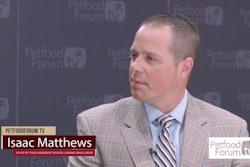
Nestle Purina PetCare inaugurated a 5,000 square-meter (53,819 sq. ft.) manufacturing hall at their plant in Bük, Hungary on November 10. Over the past seven years, Purina has invested HUF 43 billion (US$161 million) in the pet food plant, according to the company. The facility now employs 900 people and is the largest in Europe.
The Bük pet food facility expansion includes two new production lines with four fillers and an automated multi-pack packaging unit. The plant produces canned pet food and may have a daily output capacity of 1.6 million products.
Purina’s effect on the Hungarian economy
Purina’s Bük plant currently produces approximately one million products every day, creating more than 50 truckloads of pet food per day. For Hungary, this pet food factory means a stable market for nearly 2,000 domestic suppliers, including local farmers.
“Sixty percent of the agricultural produce used in our Bük factory – more than 78,000 tons - comes from Hungarian producers”, Kai Herzke, director of the Nestlé Purina plant in Bük said in a press release. Over the past ten years the Nestlé Group has purchased cereal crops in excess of 900,000 tons from Hungarian farmers.
The Bük pet food plant exports 90 percent of its output to 42 nations around the world.
Hungarian pet food market and exports
Nestlé Purina’s focus on developing pet food export sales is an important factor in Hungary, reported Petfood Industry. Analysts forecast that the Hungary’s pet food market will not experience rapid growth in the coming years.
“Although the pet population will record marginal growth, consumers will spend more on pet food and pet products due to accelerated lifestyles, changing attitudes towards their pets and further improving availability of pet care products,” said analysts from Euromonitor International. “Nevertheless, growth is expected to slow down compared to the previous years as most categories reach maturity.”
The Hungarian pet care market is estimated to grow by a 3 percent value in compound annual growth rate (CAGR) at constant 2016 prices, according to Euromonitor.
Hungary has a dog population of about 1.8 million and a cat population of more than 2.25 million. About 33 percent of households own at least one dog and 36 percent of households own at least one cat, according to figures from the European Pet Food Industry (FEDIAF) association.
History of the Hungarian facility
Nestlé Purina’s Hungarian plant was launched in 2011. The production facility initially had a working surface of 10,000 square meters (107,640 sq.ft.).
Bük is located slightly more than 200 km (124.3 miles) from the country’s capital Budapest. In addition to Germany, Poland and Italy, the municipality’s location provides it with a good logistics capacity to other countries in the surrounding region, such as Austria, the Czech Republic, Slovakia, Ukraine, Croatia and Slovenia, among others.


















